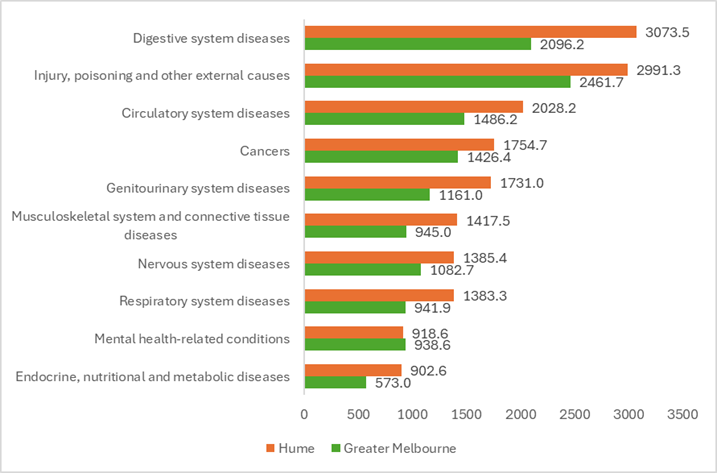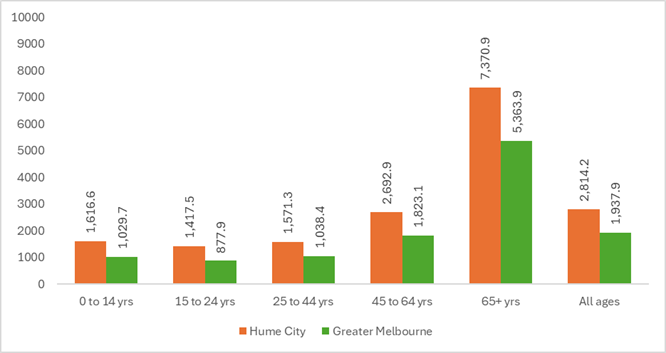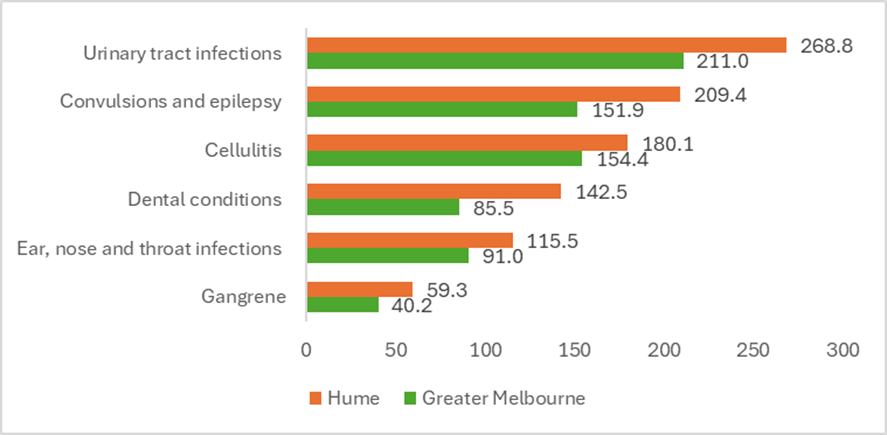The top principal diagnoses for public hospital admissions for Hume City residents in 2020/21 were ‘digestive system diseases’, ‘injury, poisoning and other external causes’, and ‘circulatory system diseases’. Hume City had higher rates of admissions per 100,000 persons in comparison to Greater Melbourne for almost all principal diagnosis types. The top three ‘injury, poisoning and other external causes’ hospital admissions were due to: ‘injury or poisoning’, ‘falls’, and ‘injury due to a thrown or falling object’, with Hume having higher admission rates than Greater Melbourne.
In comparison to other metropolitan local government areas, Hume City’s public hospital admission rates per 100,000 persons ranked in the top two for the following conditions:
- endocrine, nutritional and metabolic diseases
- ischaemic heart disease
- digestive system diseases
- genitourinary system diseases
- respiratory system diseases
- diabetes
- ear and mastoid process diseases
- asthma
Public hospital admissions, top ten principal diagnoses, rate per 100,000 persons, 2020/21

Hume City has higher public hospital admission rates per 100,000 persons for potentially preventable conditions in comparison to Greater Melbourne across all age groups and has the highest ranking amongst metropolitan local government areas for the 0-14 year old age group.
The top three potentially preventable hospital admissions for chronic conditions for Hume City residents in 2020/21 were iron deficiency anaemia, diabetes complications, and congestive cardiac failure. Hume City had higher admission rates than Greater Melbourne across all chronic conditions, and was ranked in the top two amongst metropolitan local government areas for asthma, iron deficiency anaemia, and diabetes complications.
The top three potentially preventable hospital admissions for acute conditions for Hume City residents in 2020/21 were urinary tract infections, convulsions and epilepsy, and cellulitis. Hume City had higher admission rates than Greater Melbourne across all acute conditions, and was ranked third amongst metropolitan local government areas for dental conditions.
Public hospital admissions for potentially preventable conditions by age group, rate per 100,000 persons, 2020/21

Public hospital admissions for potentially preventable chronic conditions, rate per 100,000 persons, 2020/21

Public hospital admissions for potentially preventable acute conditions, rate per 100,000 persons, 2020/21
